We are in Ecocity Augustenborg, which won the UN's World Habitat Award in 2010 for its water retention measures. This neighbourhood became a testbed of Malmö city in 2001 because heavy rainfalls caused serious damages in those years (in 2014 one of them caused 60 million € damage) and this area with its ca. 1800 apartments is 97% owned by the municipality. This important factor enabled the municipality to prepare the district's unique stormwater management and green infrastructure system, strongly based on community engagement. Now 6 km of local canals, green rooftops, raingardens and 11 ponds collect, delay or store rainwater, many trees have been “restored” with methods like the Stockholm Tree Pits, providing more space and air for the roots, the communal park becomes a water irrigation basin in times of heavy rainfalls, and even the greywater of washing machines is purified in natural ponds too.
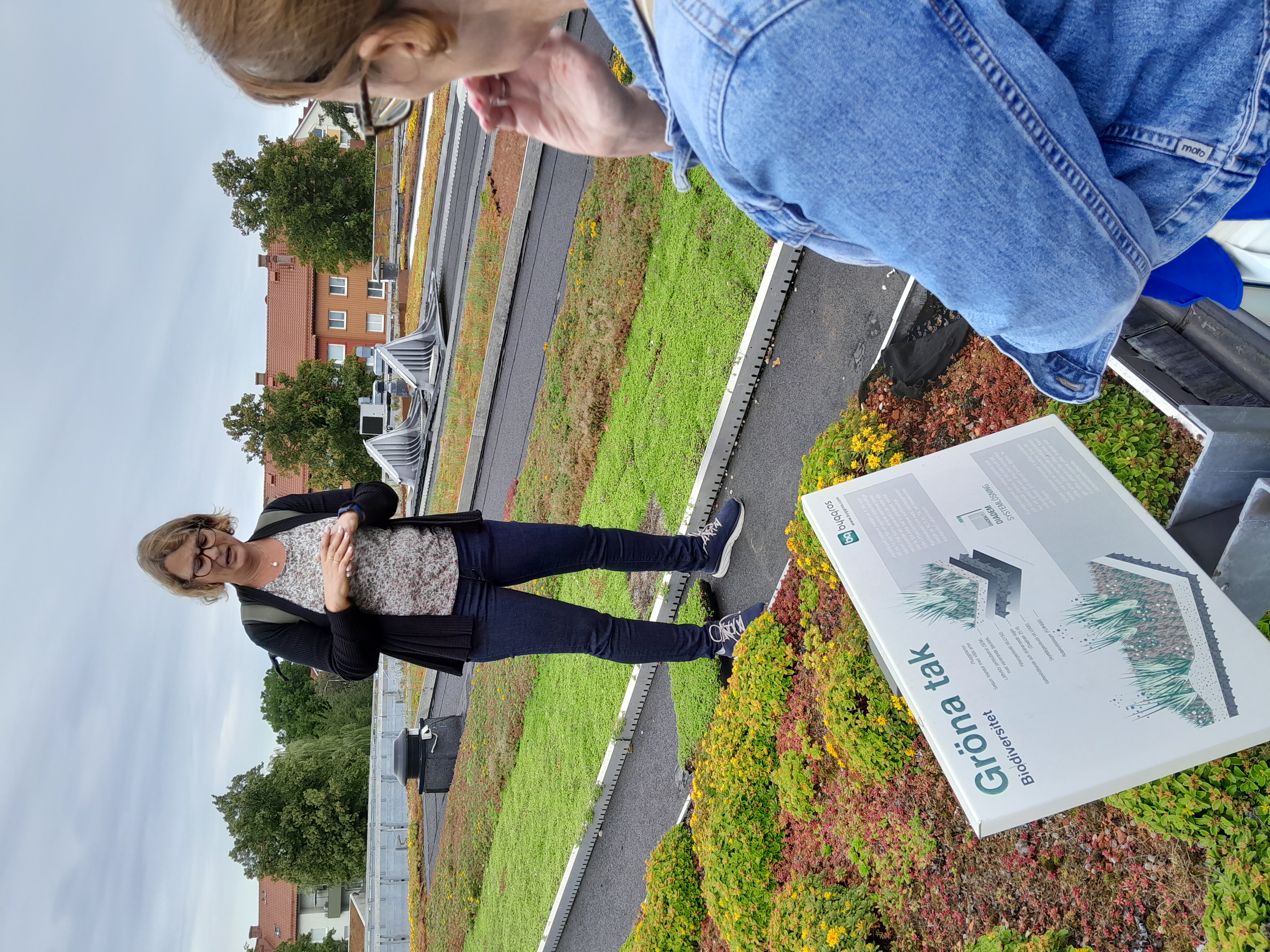
source: Szigeti Ferenc Albert
“When we started the project in 2021, basically nobody knew how to build a rain garden in Hungary. Since that time, also “thanks” for the historical drought in 2022, smart and green rainwater management has become a crucial topic in Budapest” – highlights the differences among European regions and cities Mr Zoltán Rózsa, head of the Green Office at Municipality of Hegyvidék, district 12 of Budapest, a few hundred kilometres away from Malmö. The municipality, where rainwater runoff is often critical due to its hilly topography, launched the LIFE in Runoff project, the first one in Hungary which systematically tackles the sponge city concept, together with districts 7 and 18, having different characteristics (densely built centre and outskirts) and Municipality of Budapest (there is two level municipal system in Budapest). “I learnt a lot about various techniques to retain rainwater, and was surprised to understand the crucial importance of cooperation and teamwork for applying such solutions” – says one of the participants during the first thematic, “sponge city” walk organised by the Green Office and the Hungarian Hub for Nature-based Solutions.
So, while climate change is changing precipitation patterns across Europe and “never seen” droughts hit many countries, due to urbanisation (only 5% of the rainwater can be infiltrated in a dense city) and lack of capacity of the traditional sewage systems, rainwater retention and the sponge city concept originally born in China has been an important question in most of the old continent. What are the most important lessons to be learnt by those who just started this journey?
Are you ready to give some space back to nature for effective climate action?
Most parts of Europe are facing increased frequency of meteorological drought, heavy winter (and partly summer) precipitation, as well as heat waves. In line with the EU Biodiversity Strategy for 2030 and the historic Nature Restoration Law we need to install water retention measures at all territorial levels, we need to improve the quality (and quantity) of our urban green infrastructure – and we need to halt biodiversity loss. Political leaders have finally realised that nature conservation and climate action mutually reinforce each other. The Biodiversity Strategy encourages member states to increase their protected areas by restoring natural habitats. Thus free-flowing rivers have been a crucial theme since wetlands can effectively feed groundwater into drying-out landscapes. Landscape-level water retention also highlights very well how nature-based solutions work and why nature is our best ally to combat climate change. “Wetlands are the world’s most effective carbon sink, storing twice as much carbon as the world’s forests” - says the Interreg Europe Policy Brief. Their protection and restoration are thus not only “good” for biodiversity, but critical in climate change mitigation and adaptation too. Landscape-scale restoration of wetlands will result in the creation of healthy ecosystems, better soil health, improved water cycles, enhanced biodiversity and protection against natural disasters. However, while nature-based solutions are considered the preferred solution on global and EU levels, they are important in cities too as excellent risk mitigation tools. So, the question is also valid in the urban context: are you ready to give some space back to nature? Not forgetting that our connection to nature, deeply rooted in cultural values, attitudes, and norms, plays a key role when we intend to increase the size and quality of urban green spaces as well as natural habitats and protected areas for climate mitigation and adaptation…
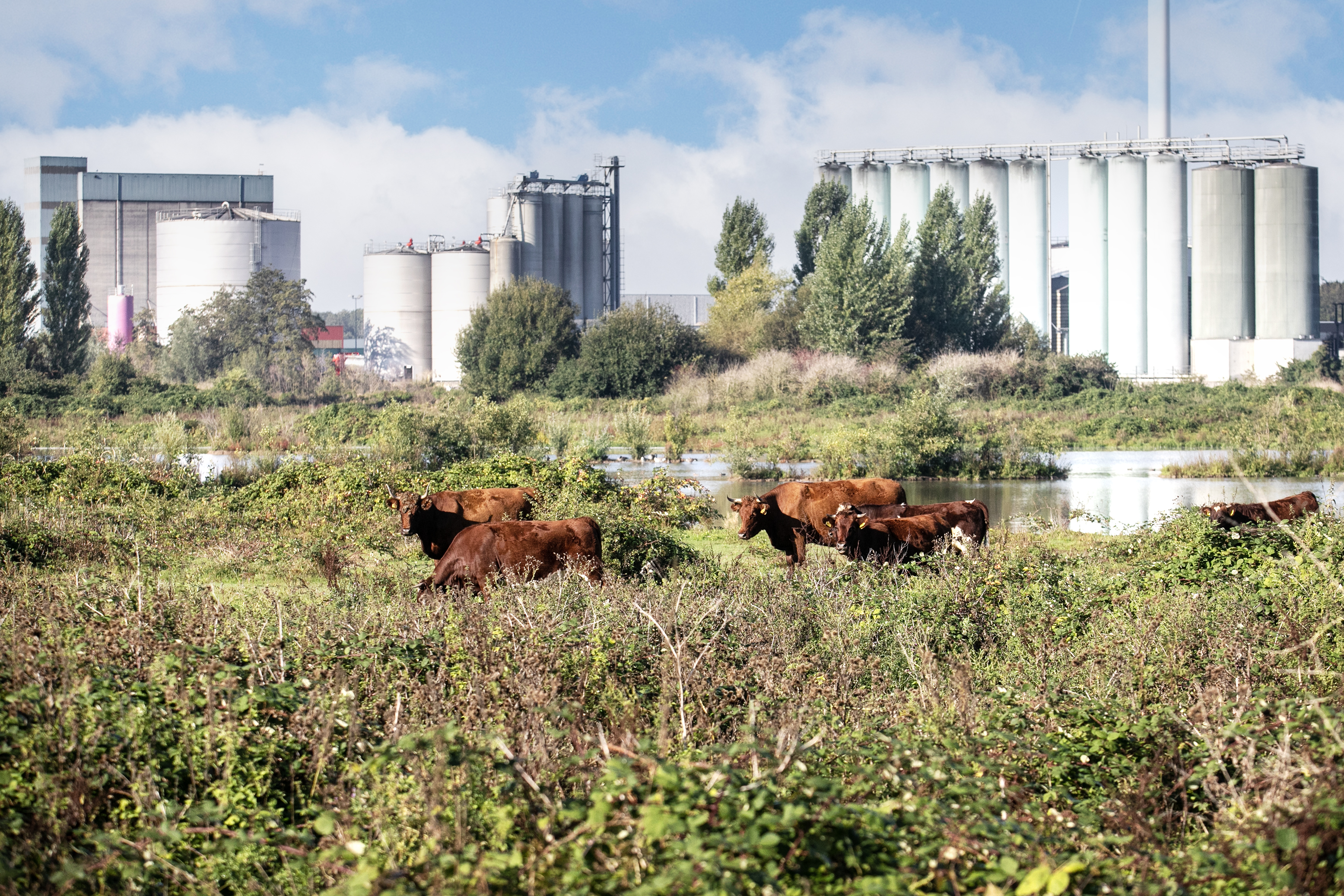
Source: Municipality of 's-Hertogenbosch
The Dutch BiodiverCity partner city, 's-Hertogenbosch decided to “rewild” an area on the outskirts of the city, using nature-based solutions as well. The question for them is how to do that together with local communities.
How do you plan to cool down your city in times of heatwaves?
Not only does increasing urban runoff play a role here as a natural disaster in cities, but extreme heatwaves also have serious health-related implications. Due to the dense urban fabric, the air temperature in the centres of large cities is generally 3-5 °C higher compared to the values measured in the surrounding natural environments. In certain cases, for example, in the downtown area of Budapest, which is very poor in green spaces even by international comparison, the difference can be as much as 8-12 °C! Cooling the air through evaporation (by vegetation or water bodies) is an important urban goal within climate adaptation.
Green is an inevitable part of the sponge city concept, but not always enough…
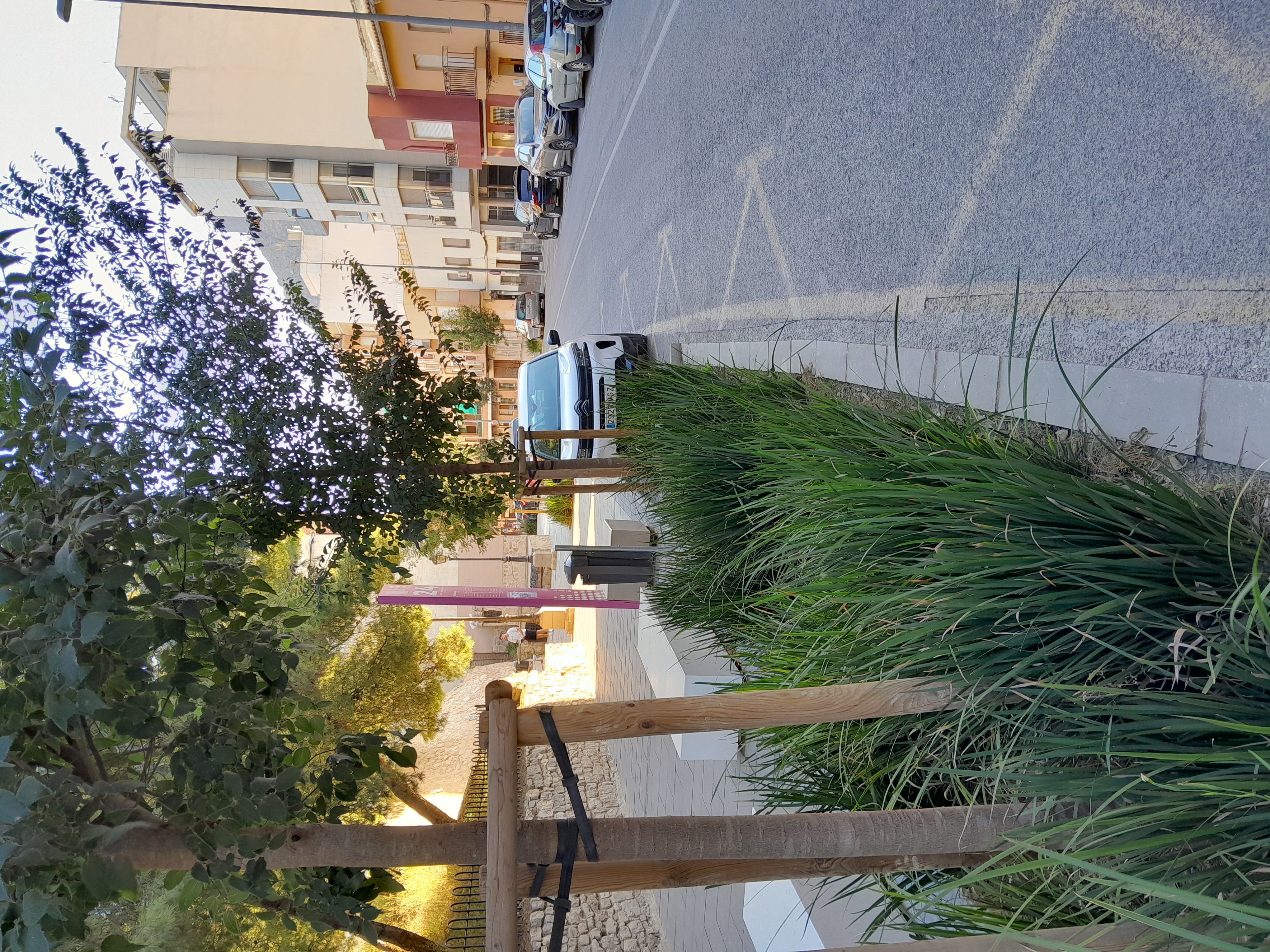
source: Szigeti Ferenc Albert
Trees are important players in the sponge city story as their canopy can absorb lots of rainwater, not to mention the retention capacity of the healthy soil. If you are interested in the sponge city concept, you also must talk about new methods to manage urban trees, especially since heatwaves put the conditions of urban trees into the spotlight too: it is more and more difficult to be an urban tree (they must grow in much drier air conditions, in compacted soil, coping with serious pollution and potential damage). The Spanish partner city of BiodiverCity network, Cieza has a focus on urban trees, also a partner of the global network of Tree Cities of the World.
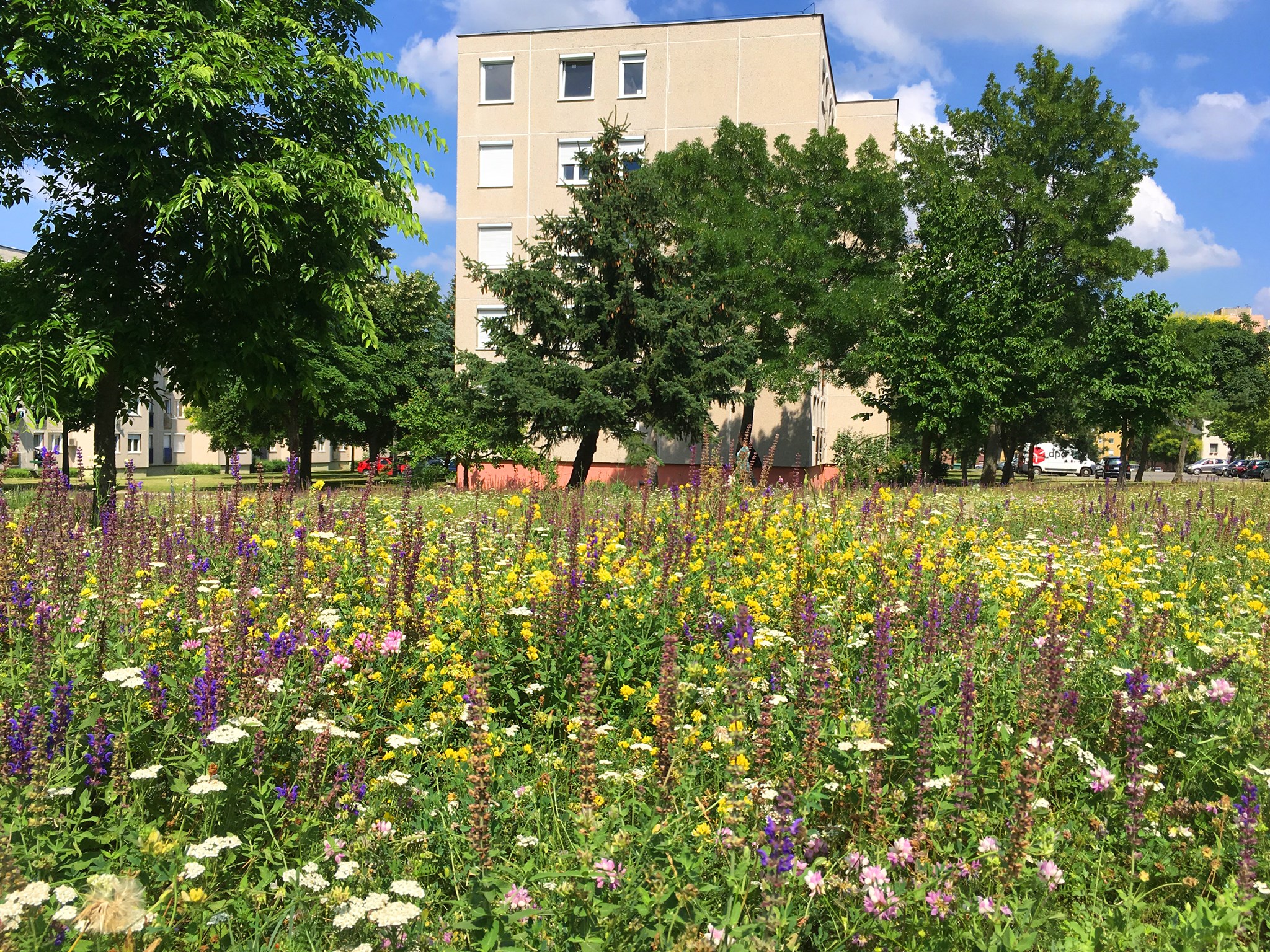
Source: VKSz Zrt., Veszprém
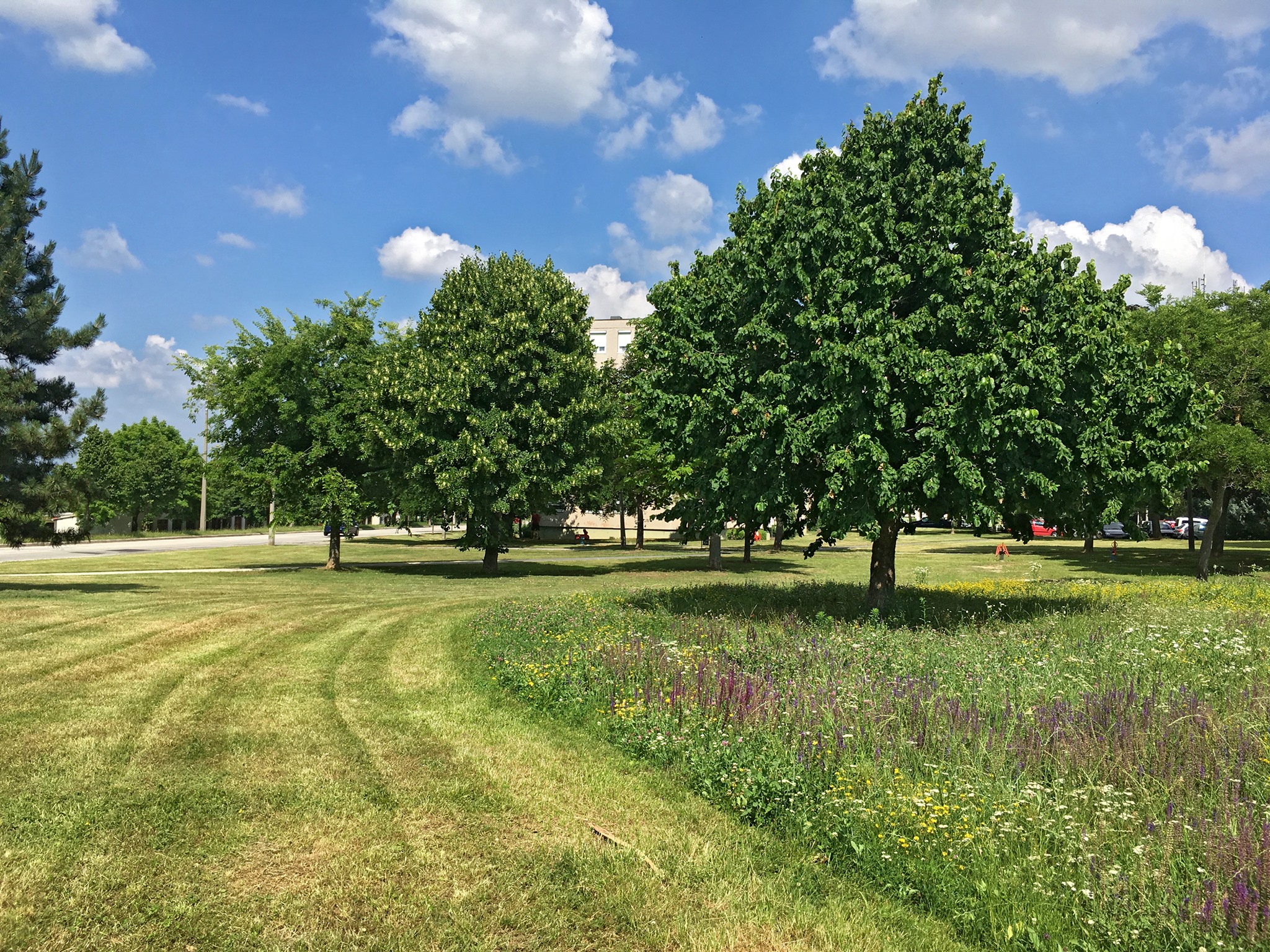
Source: VKSz Zrt., Veszprém
Have you ever walked in a meadow at dawn? Have you felt that it is often colder than the forest? Not only trees and water bodies, but biodiverse urban meadows have an important role in tempering the air in the city. The Hungarian partner city of BiodiverCity network, Veszprém has a comprehensive, well-structured strategy for climate-adaptive grassland management.
Are you ready for public park 2.0?
It is perhaps also time to rethink the role of urban parks that usually open windows for nature for thousands of urban dwellers. Are you ready to combine their recreational function with water retention and biodiversity?
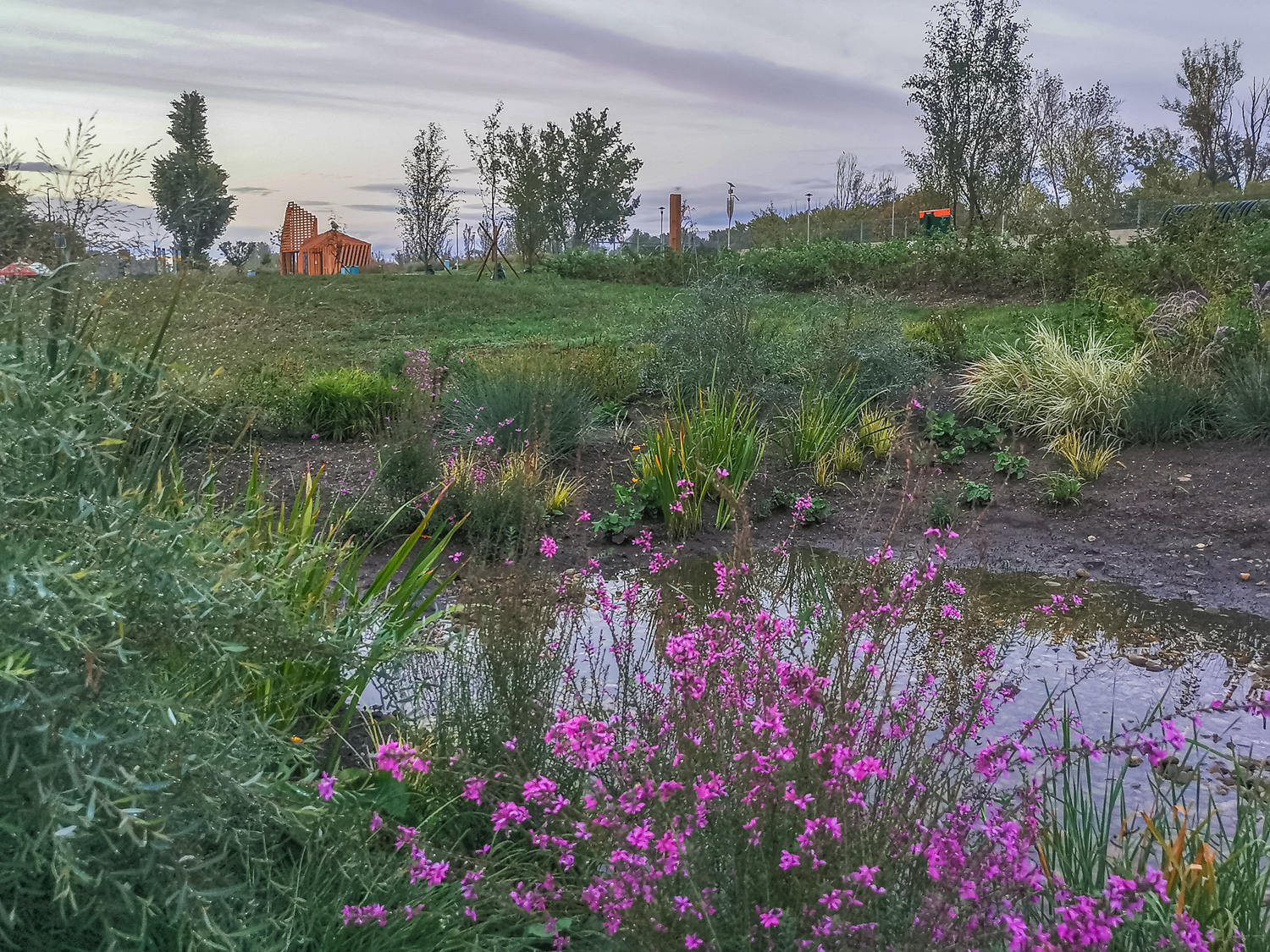
source: Főpolgármesteri Hivatal
For example, Sankt Kjelds Plads in Copenhagen, a new green area opened in 2019 can handle large volumes of rainwater by a network of raingardens and SUDs, while 9000 m2 asphalt has been replaced with 586 trees, perennials and grassland. This project was the first among the approximately 300 projects to protect the city against flash floods in the future. Enghaveparken, built in 1928, was redesigned in 2014 and the public park now can retain 22.600 cubic metres of rainwater. The award-winner Pünkösdfürdő Park in Budapest intends to bring rural land use to urban settings, thus mosaics of perennials, wildflower meadows, bee pastures, protection forest, bushes and an orchard make the frequently watered recreational area more biodiverse.
source: Szigeti Ferenc Albert
However, it is also important to mention, that nature-based and other water retention solutions (e.g. using barrels by residents) usually cannot absorb all rainwater at heavy rainfalls, traditional, grey solutions, smart technologies and residential programs are also needed.
Do you have an integrated strategy to tackle rainwater runoff?
In the last two decades, Copenhagen has also experienced major rainfall events. The largest, in 2011, caused damage totalling more than 6 billion DKK (not including direct costs of repairing municipal infrastructure or indirect costs such as loss of earnings, loss of business operation, rising insurance premiums or companies choosing to move away from the city). The Cloudburst Management Plan (2012) is one of the greatest European examples of managing heavy rainfalls in the city. As a part of it, Copenhagen has been working on transforming its green areas into climate-proof green spaces, highlighted as one of the key directions of future architecture by the Copenhagen in Common exhibition (2023) at the Danish Architecture Centre. One of the key lessons from frontrunner cities is that through initiating a professional dialogue between landscape architects, urban planners and various engineers (water, utility, and transportation), urban rainwater harvesting has been an integrated part of urban development because capturing and utilizing extreme amounts of rainfall requires the collaborative thinking of these professionals.
The secret of completely blue neighbourhoods
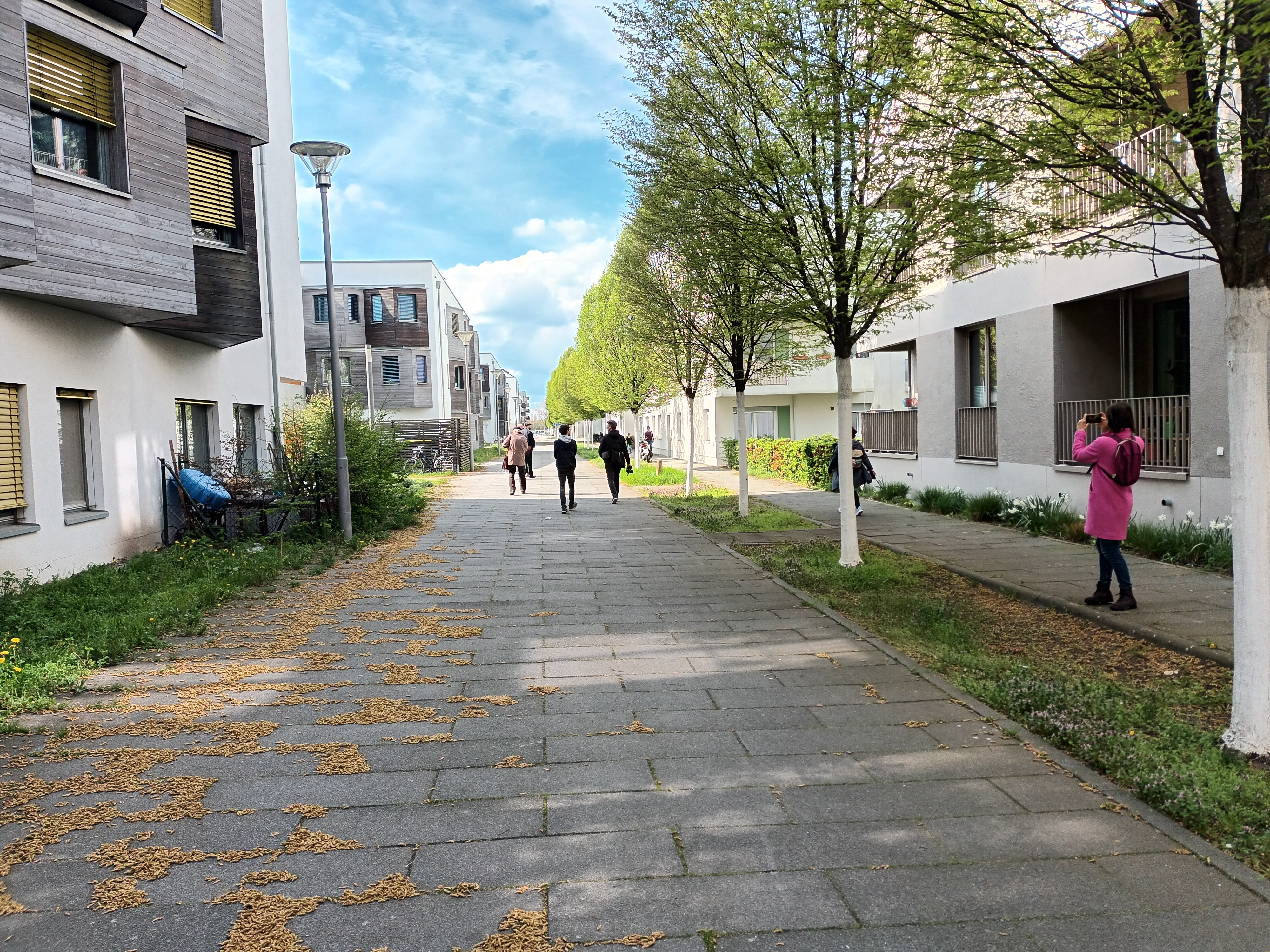
Source: LIFE in Runoff project
In Berlin for example, where a Rainwater Agency coordinates blue aspects of urban development, complete residential areas (e.g. Rummelsburger Bucht) were born in the last years without having grey infrastructure (channelisation) for rainwater. How is it possible? In Germany, there is a separate taxing system for the collection of rainwater and sewage water. In Berlin, the volume of a local tax and the tax relief system related to rainwater collection is a key driver of building green rooftops, green walls, rain gardens, and other types of sustainable urban drainage systems (SUD) and using permeable surfaces instead of building grey infrastructure to channelise rainwater. These incentives play a crucial role in activating companies and private owners. For instance, Basel started to financially support residents back in the 90’ies to build green rooftops and the initiative was so successful that the city became a world recorder for the use of green rooftops per capita (5,71 m2 in 2019) and the municipality finally deleted the support scheme.
One curb might matter…
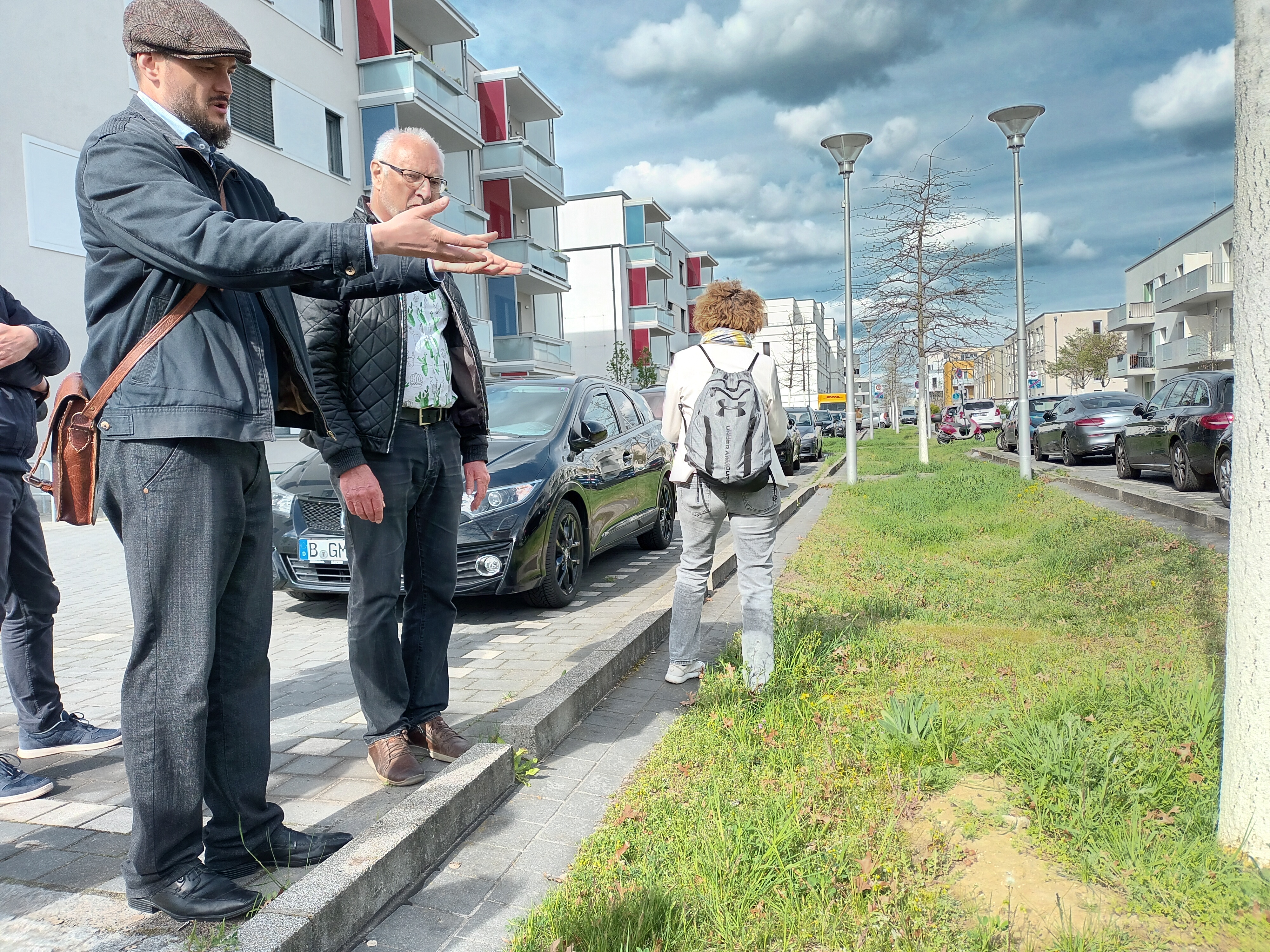
Source: LIFE in Runoff project
Are you ready to rethink your values, customs and legislation? Big changes often require small steps only. Paying attention to climate adaptation in due time led above mentioned municipalities to rethink values and customs. This resulted for example in the fact that it is now possible in Berlin to lead rainwater away from roads up to 10.000 cars per day to neighbouring raingardens located next to the roads. Is it legally possible in your city? Another example is to channel rainwater between public and private areas.
Are you ready to rethink some misconceptions?
source: Szigeti Ferenc Albert
Greenery is important, green rooftops are more and more popular, but the use of green walls is often blocked by misconceptions. It is a common belief for example that climbing plants damage the façade. This can indeed be true for some species, but only if the façade was already in bad condition before the plants grew on it. In most cases, the vegetation protects the façade. This is why Vienna not only financially supports residents to use climbing plants but offers expertise too. Green walls provide similar ecosystem services and technical benefits as green roofs, but a significant difference is that through their evaporation they cool the air directly on the streets, not above the building. This, unlike air conditioning systems, helps to cool public spaces and ventilate interior spaces simultaneously. Perhaps the most famous green façade in Vienna is the one covering the municipal waste management office, consisting of approximately 17,000 herbaceous plants over an area of 850 square meters. Its cooling effect in summer is equivalent to the 8-hour operation of 80 air conditioning units, while in winter it reduces heat loss by about 50%. They can absorb rainwater as well, but not as much as green roofs.
The big question of urban water retention
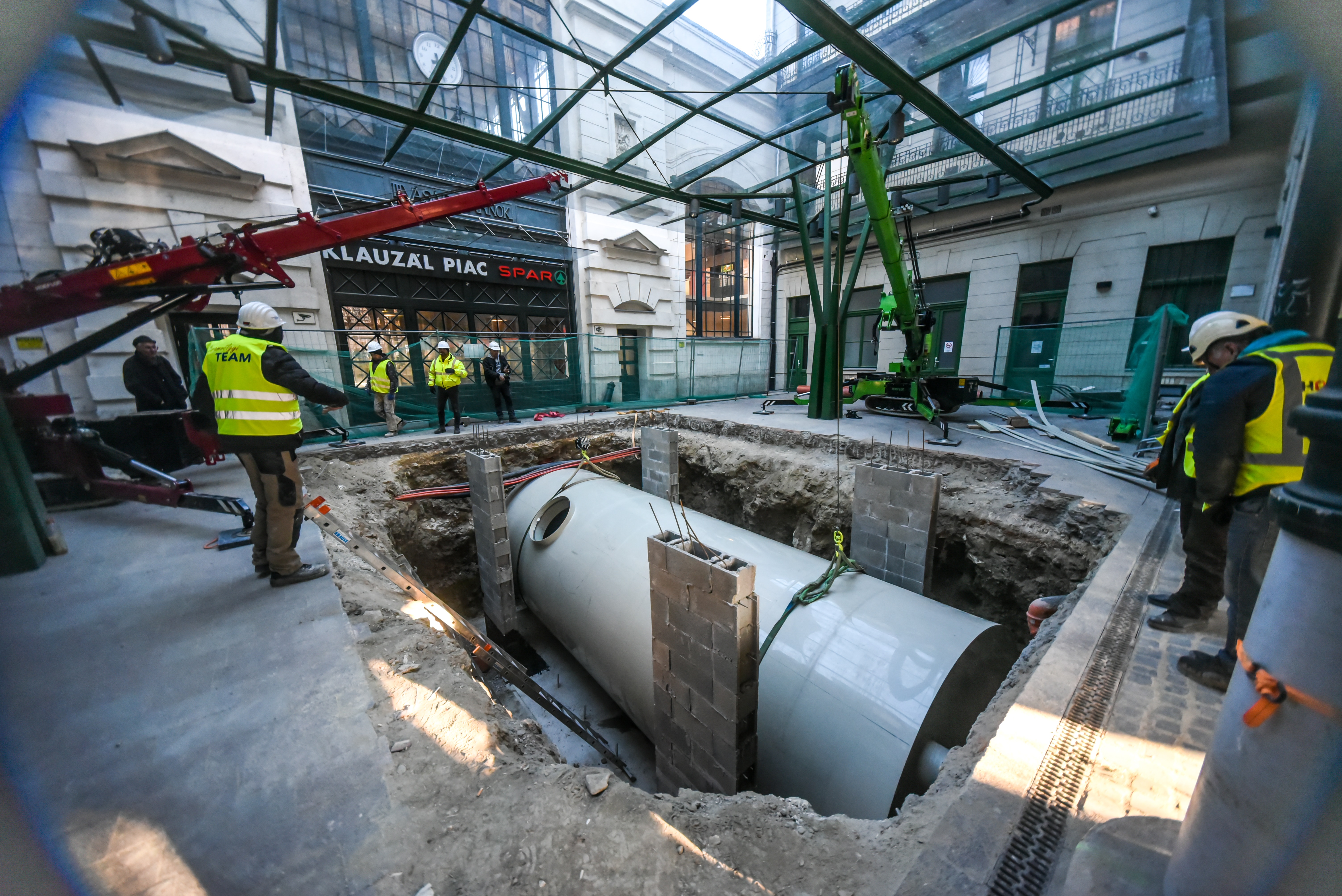
Source: Erzsébetváros Önkormányzata, Bazánth Viola
However, a core question remains open even in frontrunner cities like Berlin: how to establish urban water retention measures in the existing, especially historic urban fabric, where there is simply no space (and money) under the ground to increase the capacity of the sewage system, where sometimes the plantation of a single tree is challenging. The basic issue is that old pipelines (in bigger European cities, at least in their centres there are typically mixed sewage systems, meaning that the same pipeline absorbs rainwater and sewage water) simply cannot absorb the large volume of rainwater of a big thunderstorm. It is also true that these mixed pipelines need rainwater time by time to flush the system.
Regarding the dense urban fabric, a well-known example is Tåsinge Square, which was transformed from a plain grass area and parking spaces to a green oasis. Excellent example of the integrative aspect of green infrastructure planning, but it is important to mention that while green areas have increased across all of Denmark in the last decade, they have only declined in Copenhagen, despite the above successful projects.
Who is the “owner” of the rainwater management?
Leading cities made urban rainwater collection an integral part of urban planning and enabled different professionals to sit at the same table to solve this challenge. Each year, rainstorms and flooding events are increasing in both frequency and severity and Europeans have been witnessing such dramatic examples of extreme weather events with very large social and economic impacts, including high mortality. According to the Fifth Assessment Report of the Intergovernmental Panel on Climate Change (2022) - Impacts, Adaptation, and Vulnerability, changes in extreme short-duration rainfall events may have significant impacts on urban drainage systems and pluvial flooding.
“Results so far indicate more problems with sewer sub-charging, sewer flooding, and more frequent combined sewer overflow spills. With municipal water utilities already strained by decades of underinvestment and aging infrastructure, they now face a whole new spectrum of challenges, due to climate change, growing urban populations and legacy drainage and sewer systems which are inadequate for handling the rainfall levels we see today. Yet many communities are still failing to take these factors into account when planning for the future, and government policies are not always being crafted with these risks in mind”.
One of the most sensitive issues in Hungary regarding rainwater management is for example that, according to the law, the infrastructure for rainwater collection is not classified as a public utility. As a result, the service provider (Budapest Sewage Works, FCSM) cannot account for the related costs.
Do you have an urban runoff map?
Efficient and integrated interventions need a scientific analysis of urban runoff, consisting of both surface and sewage runoff and infiltration capacities. This is rather complicated since every curb might matter as we saw. District 12 of Budapest, for example, has been divided into runoff catchment areas and by having the map they realised that instead of building a huge cistern at the bottom of the hill where serious problems occur after heavy rainfalls, but which might be very difficult due to underground infrastructure, they should plan smaller interventions on the right place on the hillside. Scientific support can boost the above-mentioned integrative thinking.
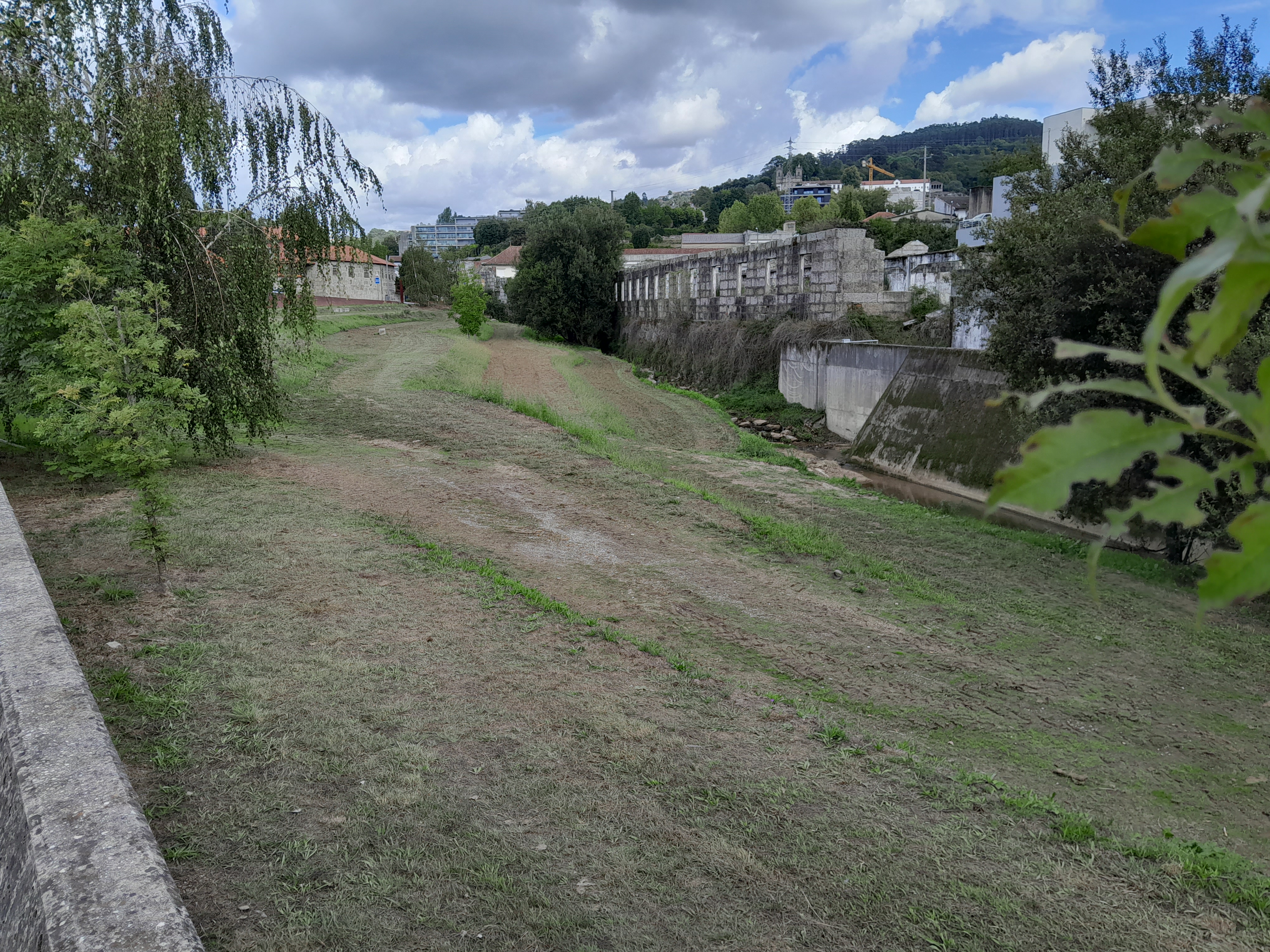
source: Szigeti Ferenc Albert
How do you intend to activate residents?
Very often the most urban green area is owned privately. In the shadow of the ecological crisis, it is thus crucial to engage residents and local companies, nurturing them to more pro-environmental behaviours and using more biodiversity-driven approaches in their gardens making them more resilient to the negative impacts of climate change too. This might include not only the distribution of barrels but the building of rain gardens, green roofs and walls too. The above IPCC report also emphasizes some pioneer city interventions (e.g. Philadelphia) that suggest supporting private stormwater infrastructure tools to reduce stormwater at a much lower cost than increasing stormwater storage capacity interventions.
What about a Watershed Coordination Forum?
A city, especially a smaller one is never independent from its geographical context. Hundreds of smaller settlements are working on water retention measures to mitigate the effects of flash floods. Building simple log dams in the upper watersheds to slow down water and stop sediment is an efficient tool. Püspökszilágy is for instance a model in Hungary for the adaptation of hilly settlements exposed to the risks of heavy rainfall events. Besides the very cheap log dams, Püspökszilágy also built a water retention basin in the lower watershed to collect water in the landscape, implementing an integrated natural water retention system (NWRM). This demonstrates how upland municipalities can effectively respond to climate change vulnerability through integrated, basin-scale, cheap NWRM implementation. In addition to this, the establishment of the so-called Watershed Coordination Forums is also essential since flash floods cause challenges in the entire territory of the watershed, and such a platform creates an opportunity to align the numerous professional, legal, technical, and environmental aspects.

